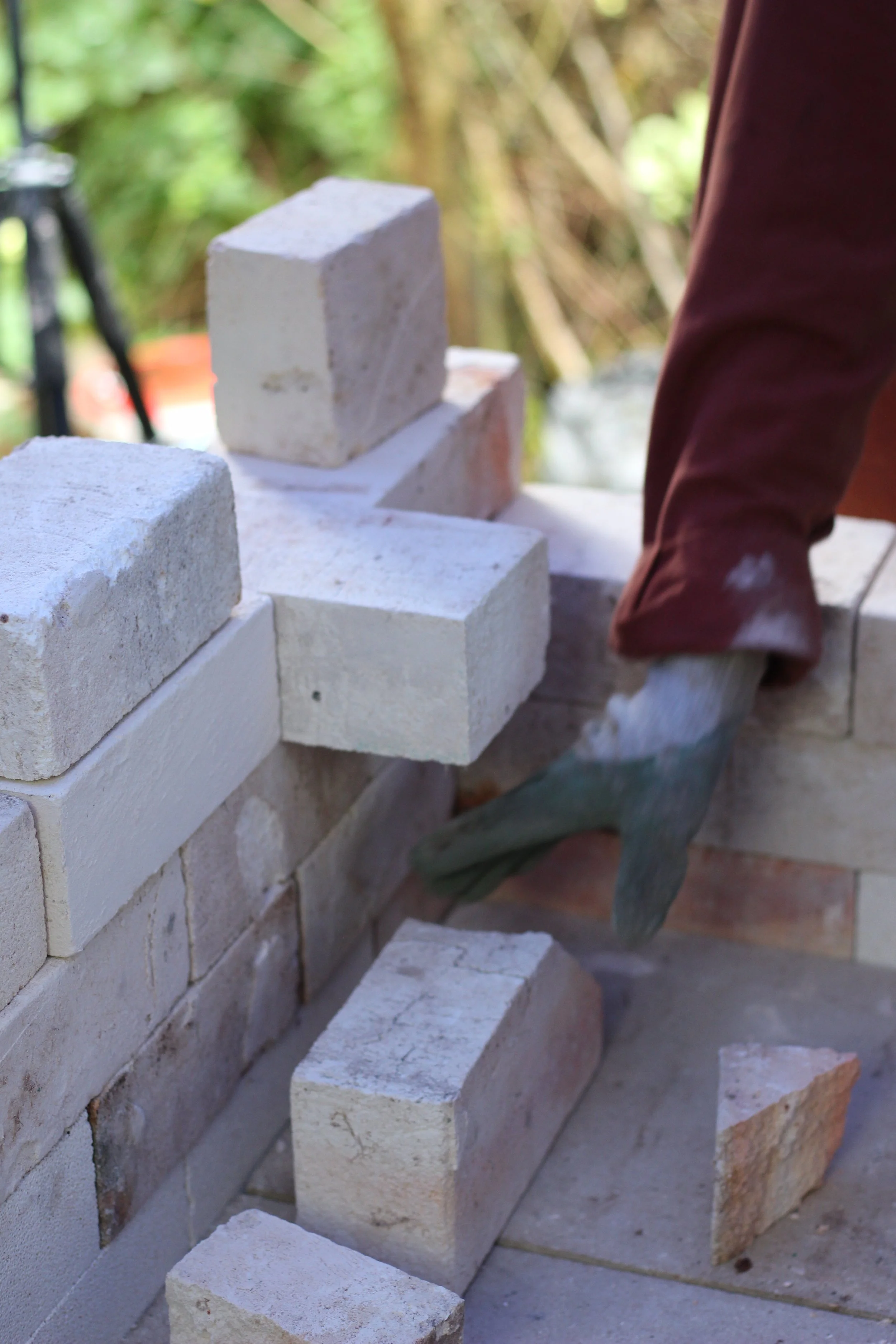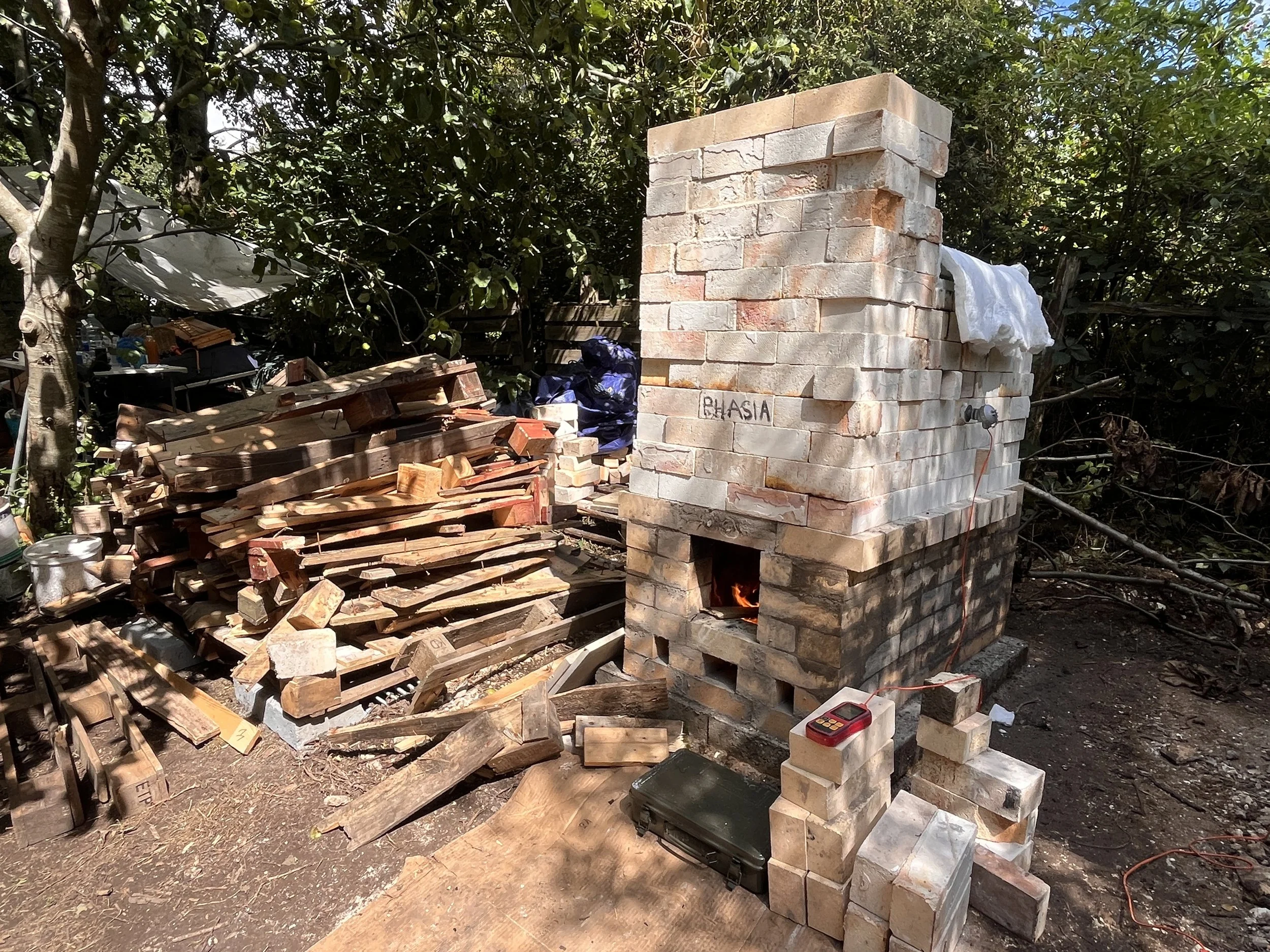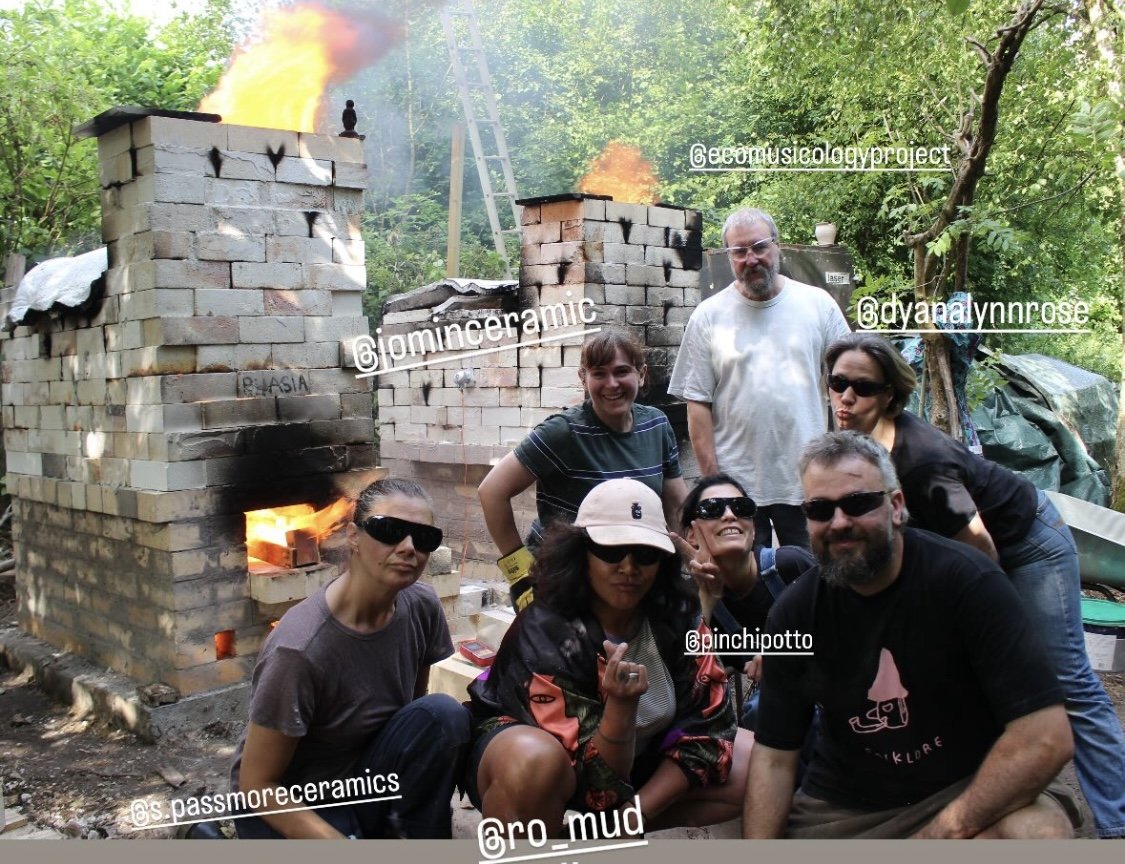
Fast-fire wood kiln in Brighton
2025
Last weekend I took part in a kiln build and firing on the Stanmer Estate in Brighton. Jack, @thebeakerfolk, led a course to build a Philosopher’s fast-fire kiln and then fire it.
I couldn’t make it the first day - but everyone put in very hard work levelling the ground and cementing together hard bricks to build the firebox base. This type of kiln has the firebox below, where the flame moves to the back of the firebox, up through the pots and into the chimney at the front. Because of the quicker fire, you have to have very robust heat-resistant clay, and you don’t get as much ash buildup or directional marks. Next time I might try and encourage this more - using a ‘glitterschpritzen’ - a device to spray ash into the ware space.
The second day was about building the space for the ware, using soft brick. We wanted a very tight fit as they’re not cemented together, which needed a fair bit of sanding to get even, clean bricks. Finally we had the 6 levels including the chimney, and packed the freshly glazed pots.

The firing was exciting, using ‘junk’ wood, which is something I’ve not tried before - heat-treated old wooden pallets. There was a lot of nails fired along with the wood, but it didn’t seem to affect our temperature rise or the results, which was very impressive to me! In past firings, with bigger kilns, I’ve had to be so careful with the soft-vs-hardwood usage to balance the ‘push’ of the temperature and not to over-stoke or choke the firebox with ash.
I got some lovely results that I’m very happy with - using simple celadons, a porcelain shino and reactive slip. Only the celadon worked perfectly - which was great as it was my liner glaze! - but even so, I’d like to see more reduction and more ash effects next time. More to come I hope!
The Stan(mer-gama) was already built, so we decided to make a slightly different shape, to see what changes it would cause. We built one more layer on the ware chamber, and one additional layer on the chimney (to keep the same height-ratio as the other). This meant that we could fit lots more pots in this one - and actually, it didn’t make almost any difference to the final effect. There was the slightest bit more matte glazes on the smaller kiln, and more gloss on the larger - possibly because the smaller kiln retained the heat better, and cooled slower, causing the matte to form.



